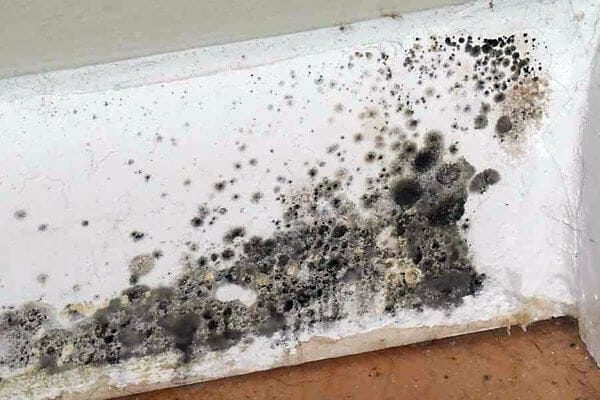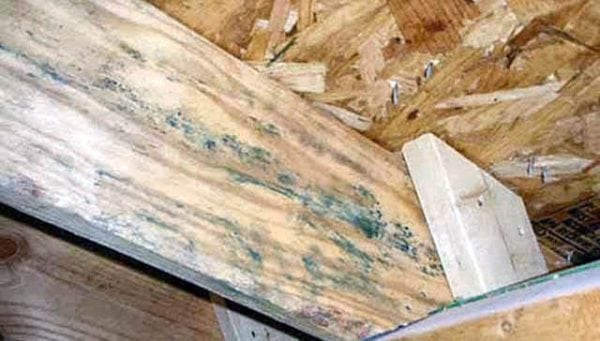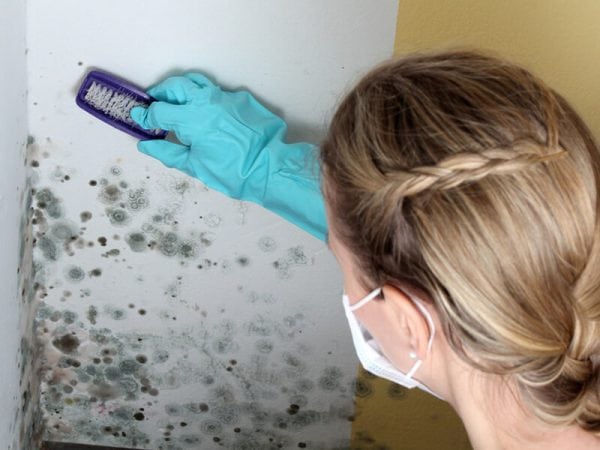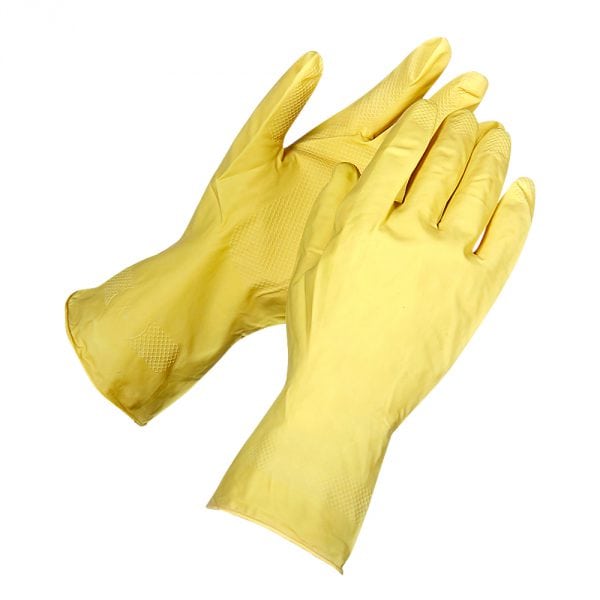Mold on the walls looks ugly, leads to the destruction of finishing and structural materials, adversely affects the health of residents. There are many ways to combat fungus, ranging from surface treatment with professional protective impregnations to traditional folk remedies. The last group includes copper sulfate. About how to remove mold with it, we will discuss below.
- Causes of the appearance of the fungus
- Surface preparation
- Blue vitriol treatment
- Preparation and application of the solution
- Security measures
- Symptoms of sulfate poisoning
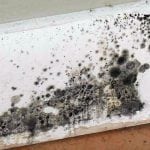
Causes of the appearance of the fungus
There are three main fungi that become a source of mold:
- moldy;
- blue
- decay.
Fungi of blueness and rotting affect, first of all, wood. Mold is universal and develops on almost all types of surfaces.
The main causes of mold:
- high level of humidity (75-95%);
- disturbed air circulation (lack of ventilation, plastic windows, closed doors in a humid room);
- increased air temperature (20 degrees above zero or more);
- missing or poor-quality waterproofing of the walls;
- damp in the basement;
- uninsulated seams on the walls;
- plumbing leaks.
As soon as conditions are created for the development of the fungus, its spores fall on moist surfaces and begin to spread in colonies along the building material, spoiling its appearance and leading to its destruction. Part of the spore enters the respiratory tract of residents, which leads to the development of many diseases, such as, for example, bronchial asthma.
to contents ↑Surface preparation
Before processing the walls with copper sulfate, it is necessary to prepare the surface. You need to do this as follows:
- We are looking for a source of mold distribution (mycelium). It can be in hard-to-reach, inconspicuous places (for example, behind a tile). During the search, tap the tile. Each hollow area is one of the likely areas for the location of the mycelium.
- We remove wallpaper, tile or other decorative material from the walls.
- With a spatula or a hard brush, we clean the surface. Then we carry out another cleaning - this time with fine-grained emery paper.
- We process the surface with soapy water and let it dry. In the end, you need to get a perfectly clean and dry surface.
Blue vitriol treatment
Copper sulfate is an inexpensive, but quite effective way to combat fungus. You can buy it at construction or garden supplies stores. Copper sulfate is produced in the form of powder or in blue granules.
Preparation and application of the solution
To make a solution, you need to dilute from 100 to 300 grams of vitriol in a 10-liter metal container with warm water. After adding vitriol, mix the solution thoroughly. For greater effectiveness of the solution, we dilute in it a tablespoon of white vinegar.
We apply vinegar-vitriol solution on the prepared surface.For application, use a sponge or spray. After 5 hours, when the solution has completely dried, we conduct another surface treatment with copper sulfate. The total number of repetitions of the procedure depends on the degree of mold damage to the surfaces. Usually enough 2-5 repetitions.
to contents ↑Note! If the material is too deeply affected, a simple treatment with copper sulfate may not be enough. You will have to completely remove the plaster or other material and then proceed to surface treatment.
Security measures
Copper sulfate (copper sulfate) is a source of danger not only for the fungus, but also for human health. Although in reality it is rather difficult to poison with copper sulfate - it will take more time than is necessary for processing the walls, however, you still need to protect yourself from the negative effects of the solution. This can be done by taking a number of simple safety measures:
- Use rubber protective gloves.
- Protective clothing should completely cover the body.
- A gas mask or respirator should be used to protect the respiratory tract.
- The room where the surface is treated with copper sulfate must be well ventilated or ventilated.
Copper sulfate is hazardous to health for about two days - until it is completely dry. After drying, copper sulfate is not a threat to humans.
to contents ↑Symptoms of sulfate poisoning
Typical symptoms of copper sulfate poisoning:
- nausea turning into vomiting;
- pain in the stomach;
- cardiopalmus;
- general weakness;
- toxic shock;
- allergic manifestations, rashes, itching.
If symptoms of poisoning with copper sulfate are detected, you should immediately consult a doctor.
If everything is done correctly, the walls are protected from the appearance of the fungus, even if there are conditions for its repeated occurrence. However, a reliable, long-term result in the fight against mold can be achieved only if the conditions for the development of the fungus in the future are eliminated or at least minimized.

